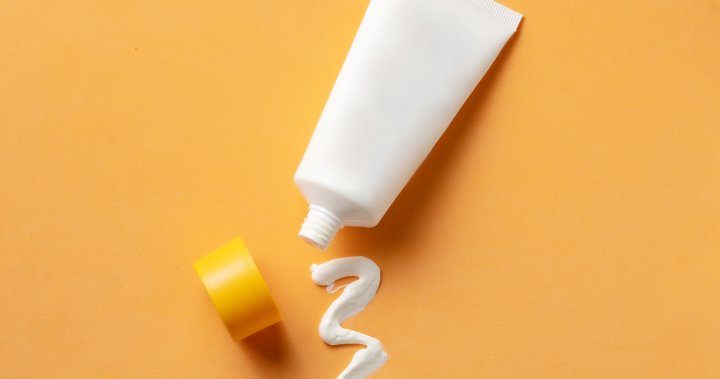As the summer season kicks into high gear across Canada, experts are hoping to set the record straight on sunscreen. Between cottage trips, outdoor parks, and sun-soaked days at the beach, they say it’s crucial to separate fact from fiction when it comes to protecting our skin from harmful ultraviolet rays (UV rays).
Exposure to the sun’s UV rays not only can cause moderate irritation but also raises your risk of developing melanoma – skin cancer – as well as eye and lip cancer, according to the Canadian Cancer Society.
Both ultraviolet A (UVA) and ultraviolet B (UVB) rays can cause damage to your skin. UVA rays go deeper into the skin and can cause DNA damage, while UVB rays are responsible for burning the skin.
But there are ways to help minimize the damage of UVA and UVB rays. Here’s what you should look for.
When you head to the sunscreen aisle at the store, it may be a bit overwhelming with all the choices, from lotions, sprays, creams, and sticks. Ultimately, the texture is a personal preference, but there are two factors to consider: SPF and broad-spectrum.
Broad-spectrum sunscreens offer protection from both UVA and UVB rays, according to Health Canada. The Canadian Dermatology Association recommends a minimum broad-spectrum sunscreen of SPF 30 or higher.
SPF is a relative measure of how long it will take for unprotected skin to burn in the sun compared to how long it will take if the recommended amount of sunscreen is used. SPF 15 sunscreen blocks 93% of UVB rays, and sunscreen with SPF 30 blocks 97% of UVB rays.
Experts advocate for a higher SPF in sunscreen if possible, as most people tend not to apply enough sunscreen for the SPF to work as effectively as claimed.
In terms of sunscreen application, it is recommended to apply a teaspoon amount on the face. When applying sunscreen to the body, the amount needed depends on the amount of clothing one is wearing. It is advised to apply sunscreen only to parts of the body directly exposed to sunlight. Sunscreen works right away, so there is no need to wait 15-30 minutes before heading out.
Reapplication of sunscreen should be done when swimming or experiencing heavy sweating. UV rays can penetrate through clouds, fog, and haze, so it is essential to wear sun protection even on cloudy days.
While many beauty products contain SPF, it is not enough for ultimate protection. SPFs in beauty products are not thoroughly tested as they are not classified as drugs in Canada.
There are two main types of sunscreens: chemical and mineral. Chemical sunscreens absorb UV rays and convert them into heat, while mineral sunscreens create a physical barrier on the skin’s surface that reflects and scatters UV rays. Mineral sunscreens are a better option for those with sensitive skin and are considered to be less harmful to the environment.
Age may play a role in sun protection, as youth are more susceptible to burns and are at a higher risk for melanoma later in life. Older individuals usually have less sun exposure but may be more susceptible to burns past the age of around 65.
Overall, it’s important to protect your skin from harmful UV rays by using broad-spectrum sunscreen with a minimum SPF of 30, applying an adequate amount, and reapplying as needed.

